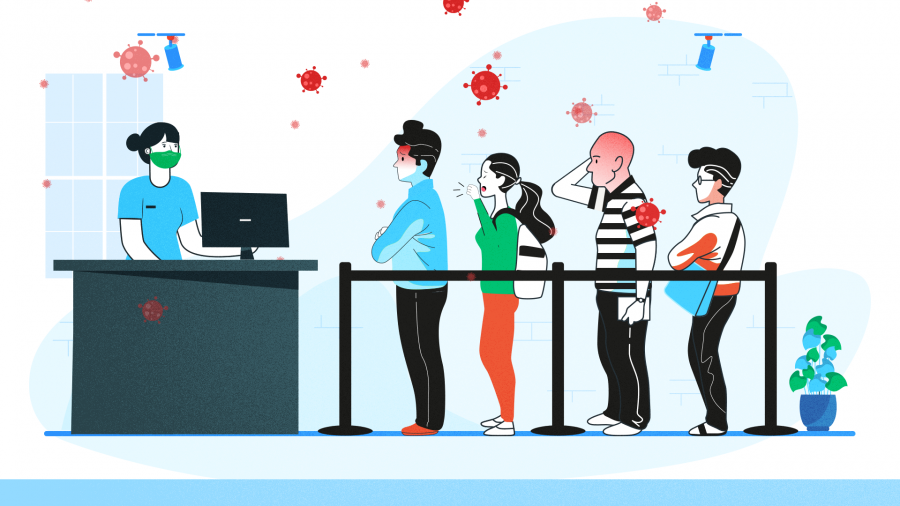Liberrex, is specialised in the development and distribution of customer flow management solutions. Our company summarises in six steps the keys to providing the best customer experience.
Step 1: Before arrival
The CFM app can begin before customers visit the business, bank, hospital, or utility center. For example, by booking an appointment or a place in the queue with a smartphone app. This reduces the time that the customer spends on hold and therefore positively affects the customer service experience.
For the service provider, CFM can be a tool to control and move high customer flow away from peak times, bringing it back to less busy parts of the day, as well as providing pre-visit data, so that the service provider can more appropriately assign staff and better serve customers.
Step 2: Arrival
At the time of arrival, it is crucial to find out the service that the client requests, as it prepares the ground for the entire route that the customer will take. If you know what customers want, you can start planning the service delivery process, either through the receptionist or with a self-service solution.
CFM technology offers the possibility to segment the clientele. Customers who require a more complex and slow service can be managed separately, reducing the risk of “blocking” other customers and negatively affecting their service experiences. In a world where service providers strive to generate more loyalty among their customers, this represents an interesting opportunity.
Step 3: Queue and wait
After arrival, most customers should wait. This step is probably the one most at risk of negatively affecting the customer service experience, because if the wait is prolonged you are generally not satisfied with the service. CFM offers two ways to address this: the first is to minimize the perceived timeout. For example, if a customer has the opportunity to sit, relax and watch relevant, entertaining and informative content while waiting, the wait seems shorter than it really is.
The second is to minimize or optimize the actual waiting time. There are two types of queues: row and virtual. In the first, the client waits in line, which is usually the most efficient mode when there is a fast transaction and high performance is desired.
The virtual queue means that clients are not standing in line, as their place in the queue is retained through an ID (for example, a ticket number), so it is often used for transactions and longer waits.
Step 4: Attention
If customer identification is made on arrival, each customer can be paired with the most appropriate employee, so customers get the best possible support and can be done effectively by the service provider. In addition, employees can start preparing before the customer reaches the point of service; view your history on the screen and check each of the visits you have made, who attended it and what the consultation was about, in order to offer a better quality service.
Alert mechanisms can give managers the opportunity to take action if service levels are exceeded, as customer journey data is continuously saved, i.e. matching the right employee with the relevant customer at the right time, promoting productivity.
Step 5: After the attention
What the end client perceives as a single attention can be composed of multiple services with multiple advisors. One is to manage this care throughout its lifespan; from the moment the case is generated, when it is passed to different advisors or departments and until it is closed.
It is also valuable to ask the customer to respond to surveys, something that can be done after the transaction is closed and without affecting other customers’ timeouts. The information reveals what the customer perceives from the service they have just received and highlights areas that need to improve, and that their experience is closer if they feel they have the opportunity to make themselves heard.
Step 6: Administration
At any time, managers can use CFM process data to evaluate their operation and take whatever action they deem necessary, as they have real-time data captured and presented in dashboards. Service times, customer timeouts, and the number of customers are examples of what can be controlled.
With all this data it is possible to generate and distribute statistical reports, as well as schedule them automatically for previously defined users. It is also possible to perform a more advanced analysis of the data and use it to promote long-term improvements in processes and operations.
As the system connects to multiple branches across a large geographic area, managers can have an overview of the entire service network, and even know the results of assigning the right employees to relevant customers, with or without sales.
